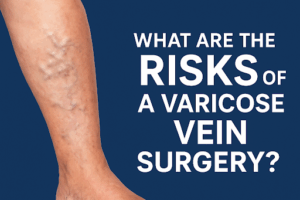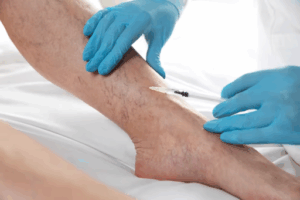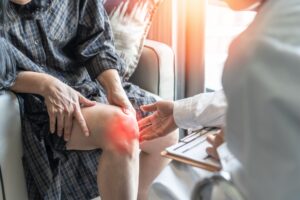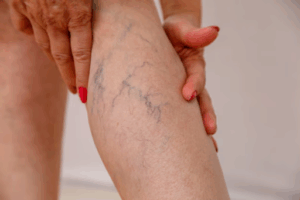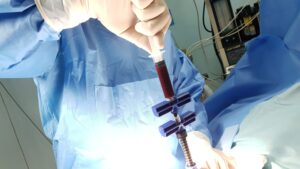Venous insufficiency is a condition where the veins in the legs fail to return blood efficiently to the heart, leading to symptoms like swelling, pain, and varicose veins. If you have been diagnosed with venous insufficiency, you might wonder if walking can help alleviate your symptoms. The good news is that regular walking can play a significant role in managing this condition. Here’s how.
Understanding Venous Insufficiency
To understand why walking helps, it’s important to grasp the basics of how venous insufficiency occurs. Veins have one-way valves that prevent blood from flowing backward as it moves toward the heart. In venous insufficiency, these valves become weak or damaged, causing blood to pool in the legs. This results in swelling, discomfort, skin changes, and in more severe cases, leg ulcers.
A major factor in venous return is muscle contraction. The calf muscles, often called the “second heart,” act as a pump. When they contract during movement, they squeeze the veins, helping push blood back to the heart. For those with venous insufficiency, muscle engagement is especially important in promoting better circulation.
How Walking Helps with Venous Insufficiency
- Improves Blood Circulation
Walking involves regular contraction of the calf muscles, which can improve circulation. As the calf muscles contract and relax with each step, they compress the veins in the legs, assisting blood flow toward the heart and preventing blood from pooling in the veins.
- Reduces Swelling
A sedentary lifestyle can worsen the swelling associated with venous insufficiency. Walking stimulates circulation, helping to reduce the buildup of fluid in the legs. This, in turn, can minimize swelling and discomfort. - Promotes Healthy Vein Function
Walking helps maintain the strength and flexibility of the leg muscles and veins. Over time, regular walking can contribute to better vein health, potentially slowing the progression of venous insufficiency. - Aids in Weight Management
Excess weight can exacerbate venous insufficiency by putting additional pressure on the veins in the legs. Walking is a low-impact exercise that can help with weight loss or maintenance, reducing the strain on your veins. - Prevents Blood Clots
People with venous insufficiency are at an increased risk of developing blood clots, particularly deep vein thrombosis (DVT). Walking helps keep blood moving, reducing the risk of clots forming in the legs.
Tips for Walking with Venous Insufficiency
While walking is generally safe and beneficial for most people with venous insufficiency, there are some precautions and tips to ensure you get the most out of your walking routine:
- Start Slow
If you haven’t been active in a while, start with shorter walks and gradually increase the distance and pace. Walking even 10-15 minutes a few times a day can be beneficial. - Wear Compression Stockings
Compression stockings are a common treatment for venous insufficiency. They help by providing graduated pressure that supports the veins and encourages blood flow back to the heart. Wearing compression stockings while walking can enhance the benefits of the exercise. - Elevate Your Legs After Walking
After walking, elevate your legs to further promote circulation and reduce swelling. This can help with recovery and provide additional relief from discomfort. - Stay Hydrated
Proper hydration is essential for circulation. Make sure to drink plenty of water, especially if you’re walking in hot or humid conditions. - Consult Your Doctor
Before starting any new exercise routine, including walking, it’s a good idea to consult your healthcare provider, especially if you have moderate to severe venous insufficiency. Your doctor can provide personalized advice and may recommend other treatments, such as medications or medical procedures.
Additional Benefits of Walking
Beyond improving venous insufficiency, walking offers many other health benefits. It’s great for cardiovascular health, reduces stress, and boosts mood. Regular walking can improve overall fitness and mobility, making it easier to maintain an active lifestyle even as you manage your venous insufficiency.
When Walking May Not Be Enough
While walking is a helpful part of managing venous insufficiency, it may not be enough on its own to address severe cases. Advanced venous insufficiency may require additional treatments, such as:
- Sclerotherapy
A procedure where a solution is injected into the affected veins to close them off, redirecting blood to healthier veins. - Endovenous Laser Therapy (EVLT)
This minimally invasive procedure uses laser energy to seal off problematic veins. - Vein Stripping or Ligation
Surgical removal of damaged veins may be recommended in more extreme cases.
Conclusion
Walking is a simple, accessible, and effective way to manage the symptoms of venous insufficiency. It improves circulation, reduces swelling, and strengthens the calf muscles, which all contribute to better vein health. While it’s not a cure, walking can be a key component of your overall treatment plan. By incorporating regular walks into your routine and following other medical advice, you can improve your quality of life and help prevent the progression of venous insufficiency. You can seek expert advice on how to manage venous insufficiency.



